Jakarta’s nickname is the “Big Durian,” the Indonesian version of New York City (the “Big Apple”). This is funny and decidedly fitting. Durians are large thorny fruits with a strong odour that can be off-putting in the beginning. Similarly, Jakarta is a huge metropolis with some 10 million plus people, almost 30 million in the Greater Jakarta Area (that’s all of Canada!) that can be undoubtedly daunting initially. However, with time, some learn to love durians, though opinions are divisive – you either love it or hate it. The same can be said about Jakarta. It takes looking past the pollution and traffic and ugliness to find the inner sweetness. Many visitors are too repulsed at first to ever reach that point. While I personally hate durians, Jakarta was not as bad as others have described it to be… but then again, we saw too little of it to truly judge.
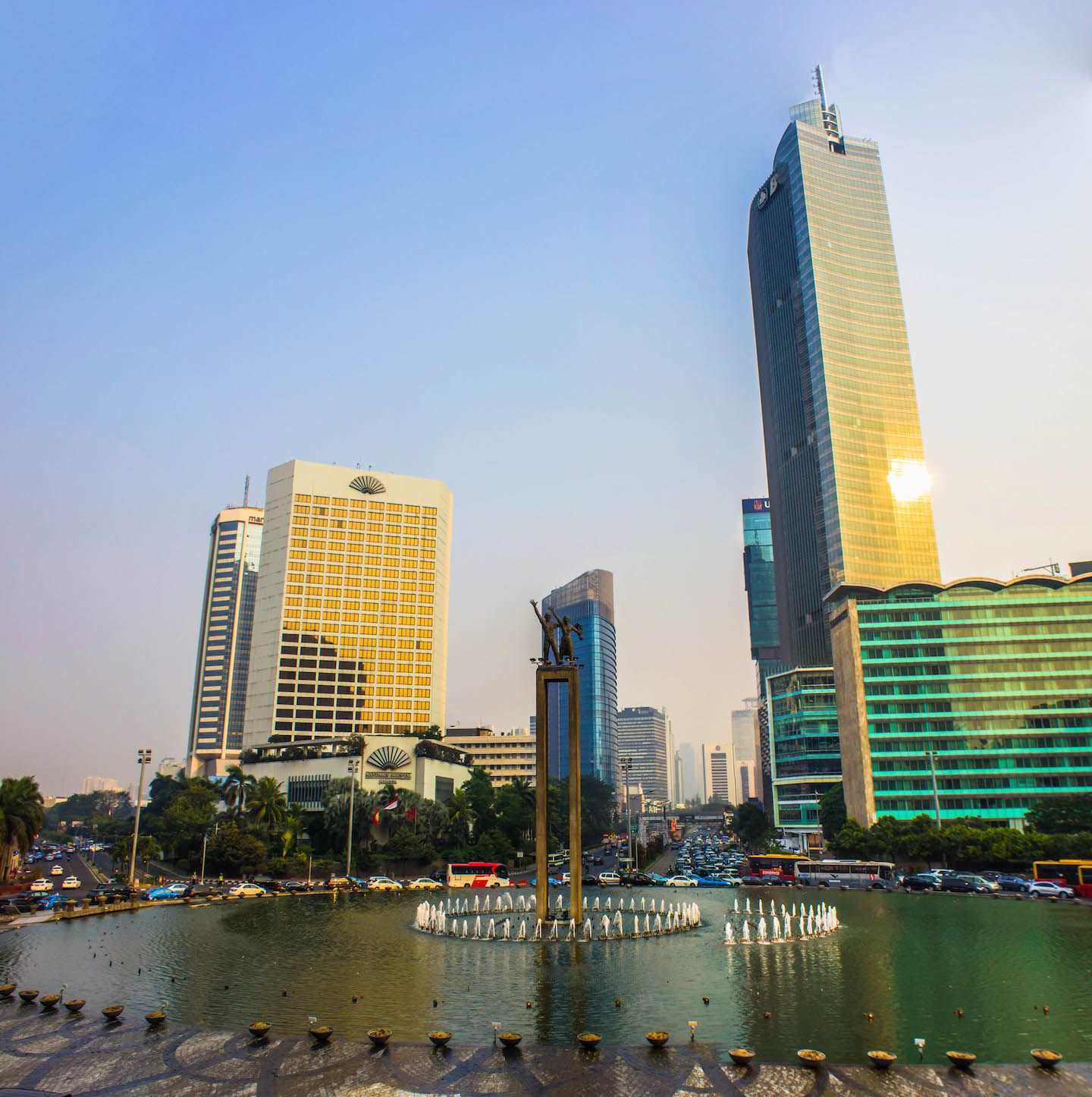
Jakarta was limiting for us similar to the way Mumbai in India was. A large, sprawling urban area filled with people. Traffic often at a standstill, public transportation difficult for outsiders. Everything theoretically within reach, yet at the same time so difficult to get to. So we did the exact same thing as we did in Mumbai: plant ourselves down in the area of central landmarks and stay there. At least hotel prices were much more reasonable in Jakarta than in Mumbai. It’s really ironic how the bigger a city is, the less of it we seem to see.

So we settled ourselves in Central Jakarta, not far from the main Gambir station, the old market Pasar Baru, and Merdeka Square. Most of what we wanted to see were around Merdeka Square, where many important government buildings are located. Examples include the National Museum of Indonesia, the Supreme Court, as well as Istana Merdeka (Freedom Palace), the official residence of the President of Indonesia. (Side note: it is also a white house.) Merdeka Palace is actually open to the public on weekends, but we were too late to make an appointment in advance. Just as well, because I’m not sure we had the appropriate clothing to enter anyway.
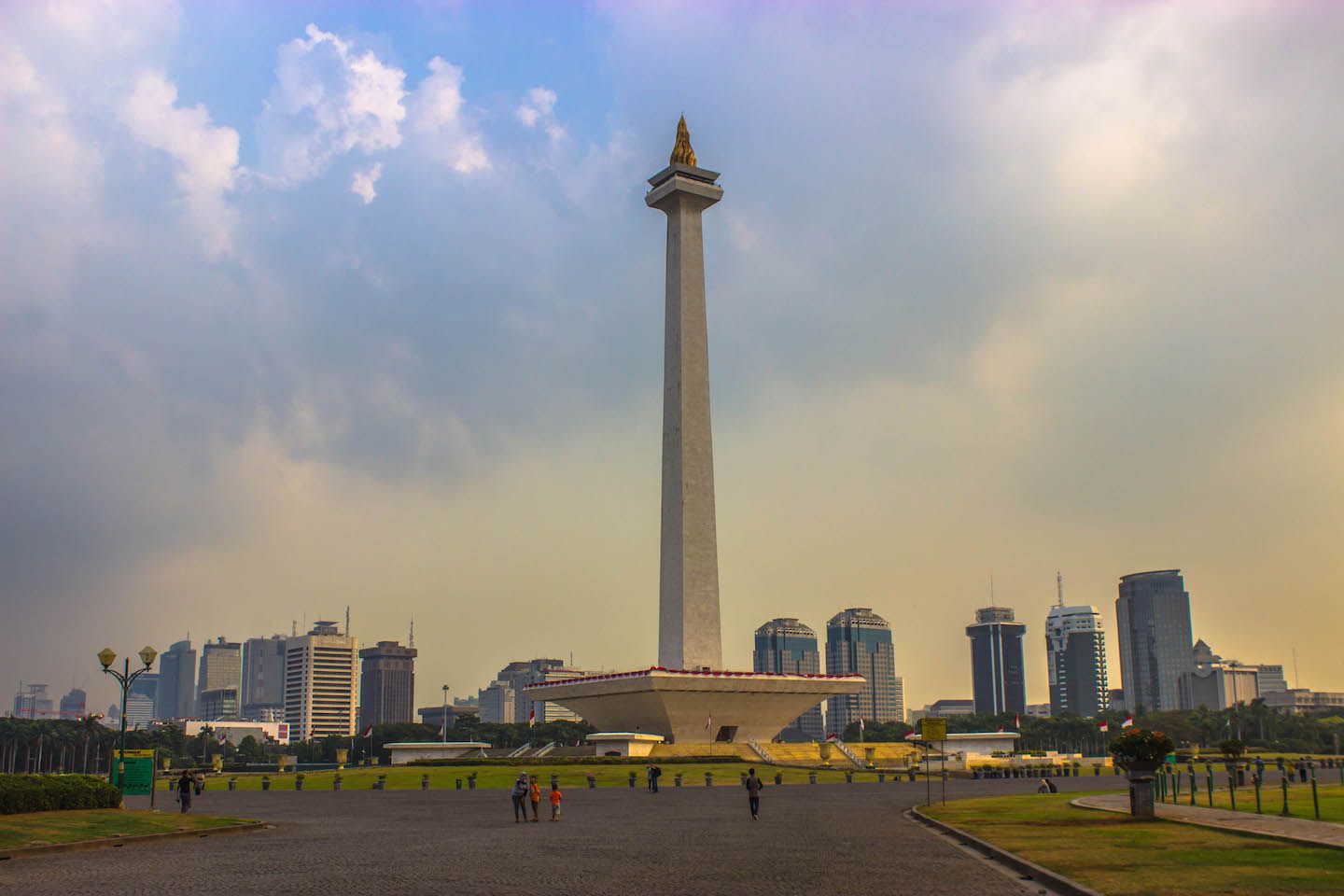
In the center of Merdeka Square stands Monumen Nasional, the national monument. Abbreviated as just Monas, it commemorates the struggles for Indonesian independence (“merdeka” is an Indonesian word for freedom). The torch-like tower design is topped by a bronze flame structure covered in gold foil. We wanted to go up the viewing tower for a view of Jakarta, but the observation deck was sadly closed both days we attempted to do so.
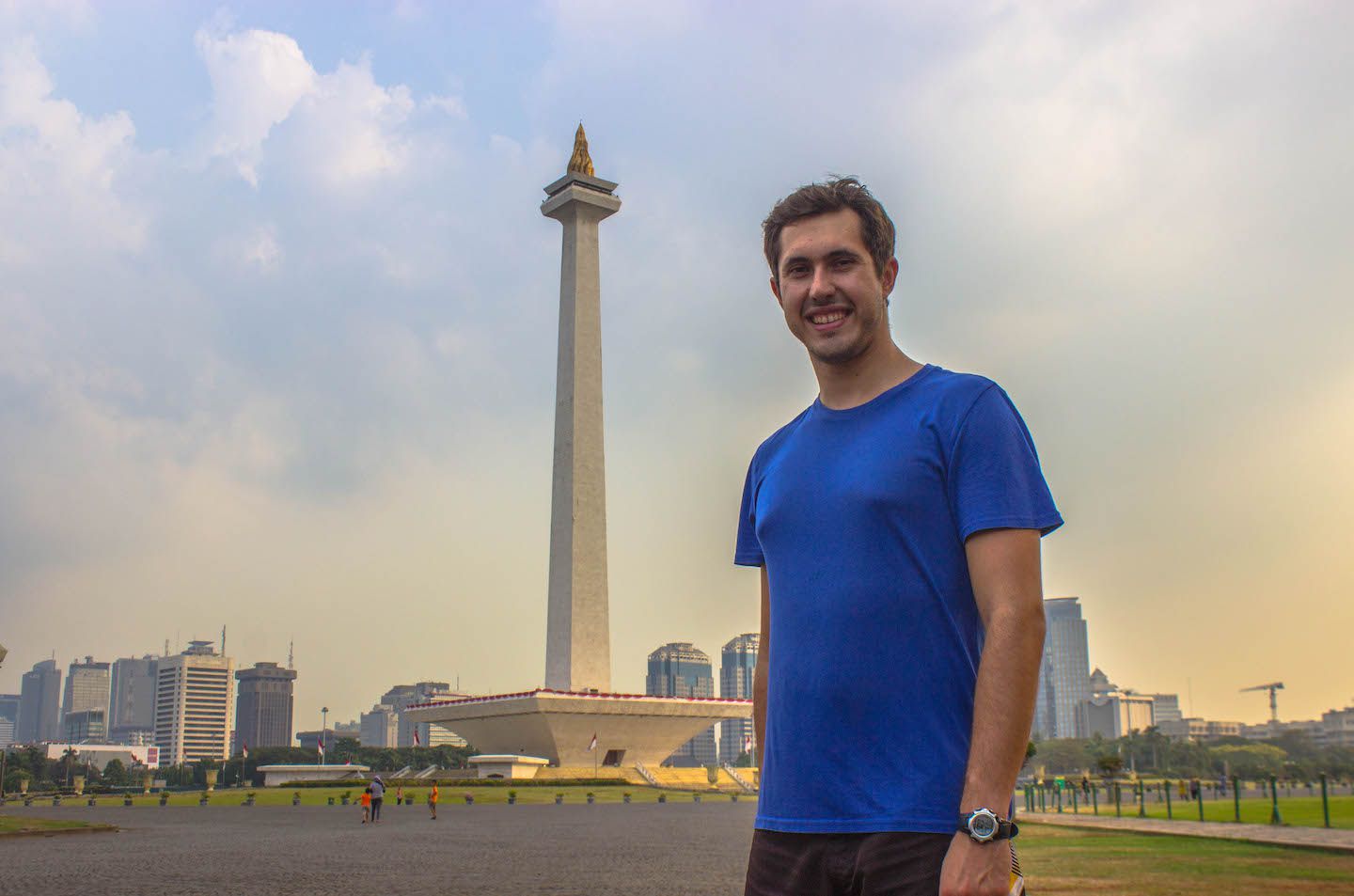
The obelisk monument stands in sharp relief to the giant park around it, so large it’s hard to comprehend so much open space in the middle of the city. The center concrete circle is surrounded by greenery, fountains, and smaller statues. Carlos swore he saw a horde of deer at one point, but I didn’t believe him. Later, we found out that there was indeed a deer enclosure amidst trees in the southeast corner.
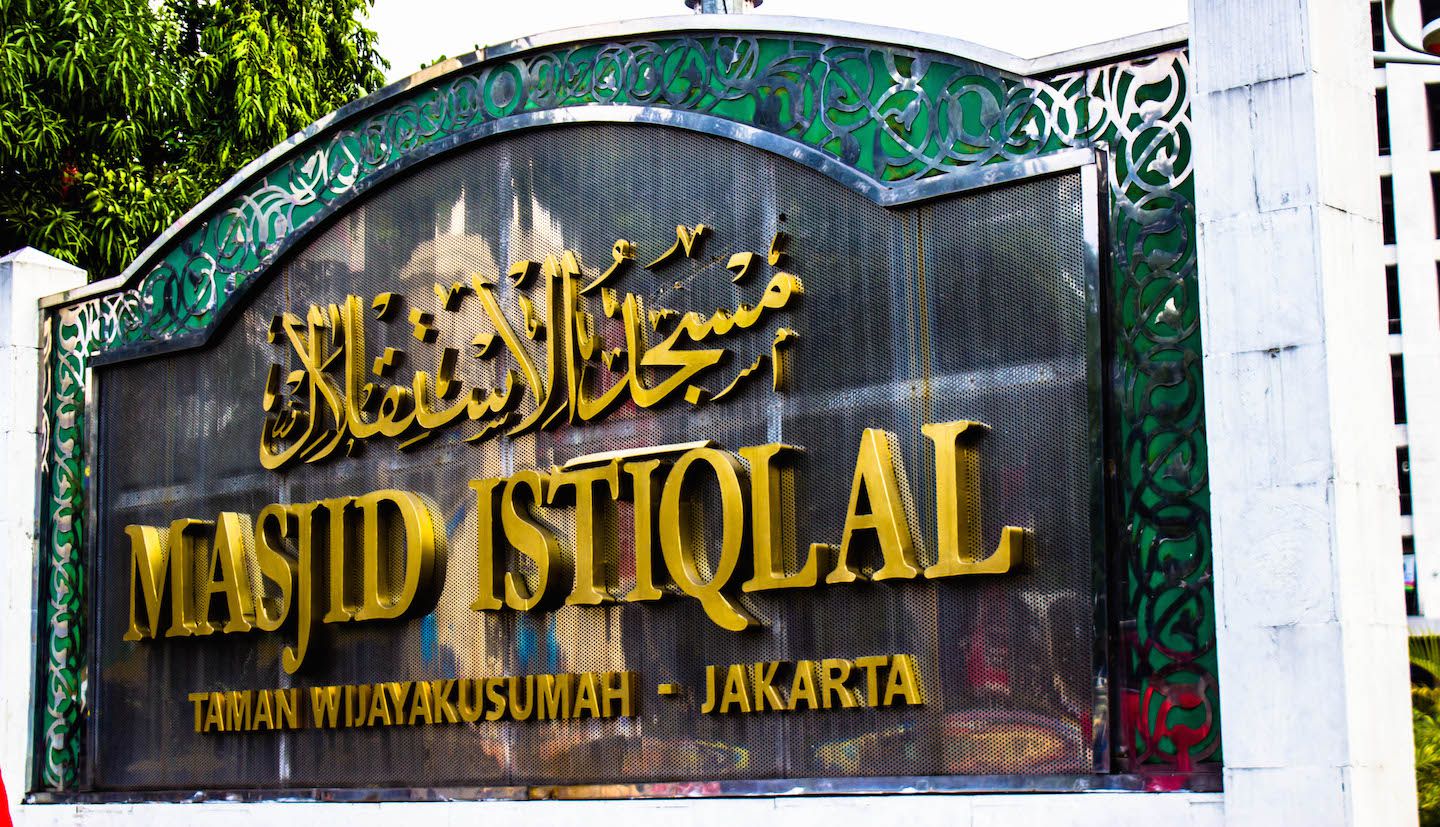
Immediately northeast of Merdeka Square was my favourite place we visited in Jakarta – Masjid Istiqlal. The largest mosque in SE Asia and right across the street from the Jakarta Cathedral, it is a true testament to the religious pluralism and diversity of Indonesia. Just like Monas, Masjid Istiqlal was built to commemorate Indonesian independence (“istiqlal” is an Arabic word for independence). Carlos’ first time in a mosque was made extra special during Ramadan. While I’ve been to ones in Istanbul, Turkey, this one was different. Masjid Istiqlal is enormous and modern-looking, with capacity for 120,000 people. The sheer size of the building and the surrounding courtyard gives it an imposing look, even from the outside.

The inside was equally simple yet undeniably majestic. Large metal columns support the grand domed prayer hall, while four levels of balconies line its circumference. Peering down into the hall from one of the balconies was a sight to behold.
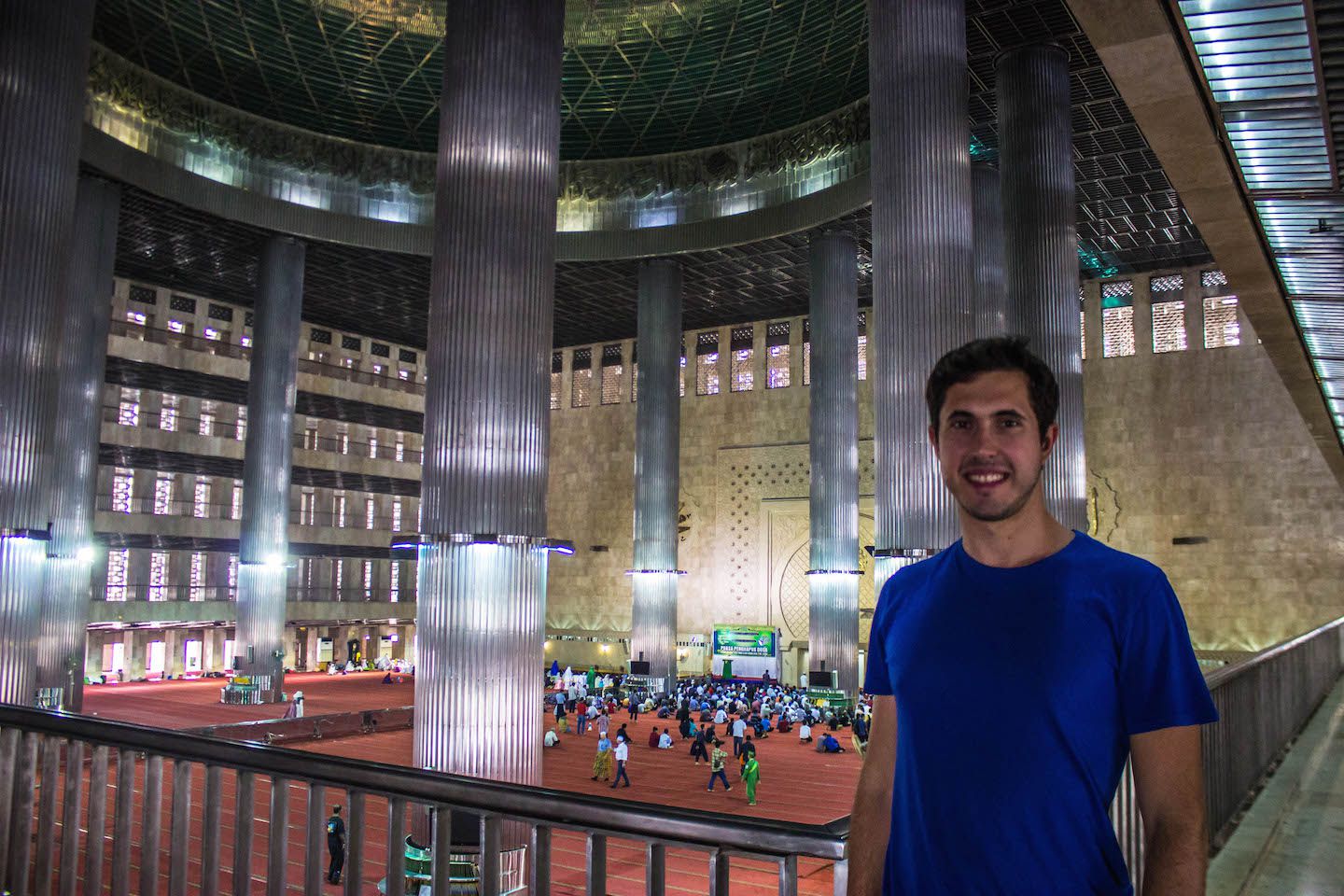
We were lucky enough to catch afternoon prayers because the lines of worshipers really gave perspective to the vastness of the palatial room. Seeing so many people all kneel and pray as one was humbling. No matter where we go, the spectacle of a group of devotees paying respect to something they hold so dear is always one of the most notable cultural events we could experience, one that we treasure.
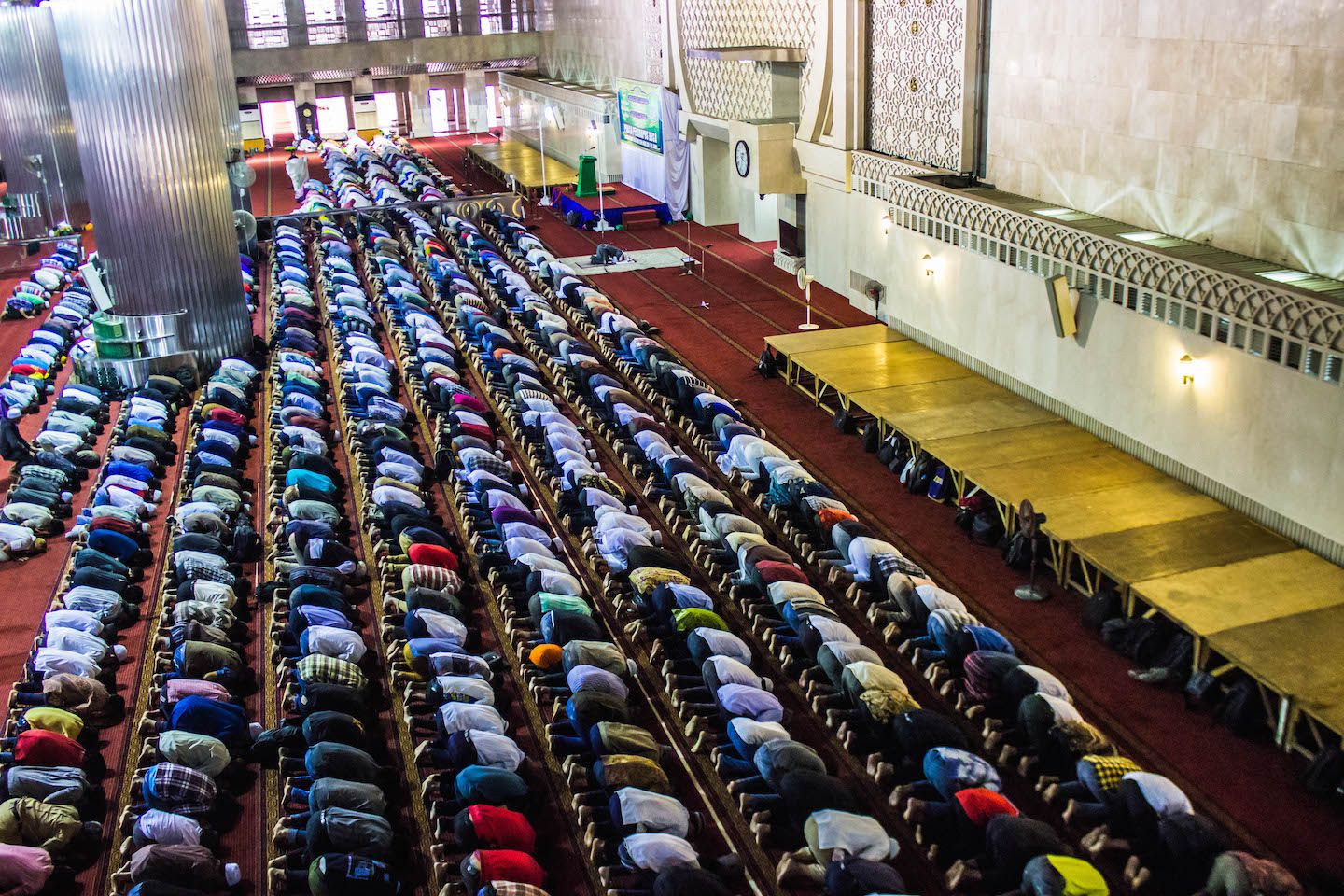
We dressed accordingly for Masjid Istiqlal (including a scarf for me) as we wanted to be respectful, especially during Ramadan. If you forget to wear long sleeves and long pants, don’t worry, the visitor’s center for foreigners has these brown silky robes. They look silly, but it’s better than being turned away. No entrance fee for visiting the mosque, but we were asked for a small donation.
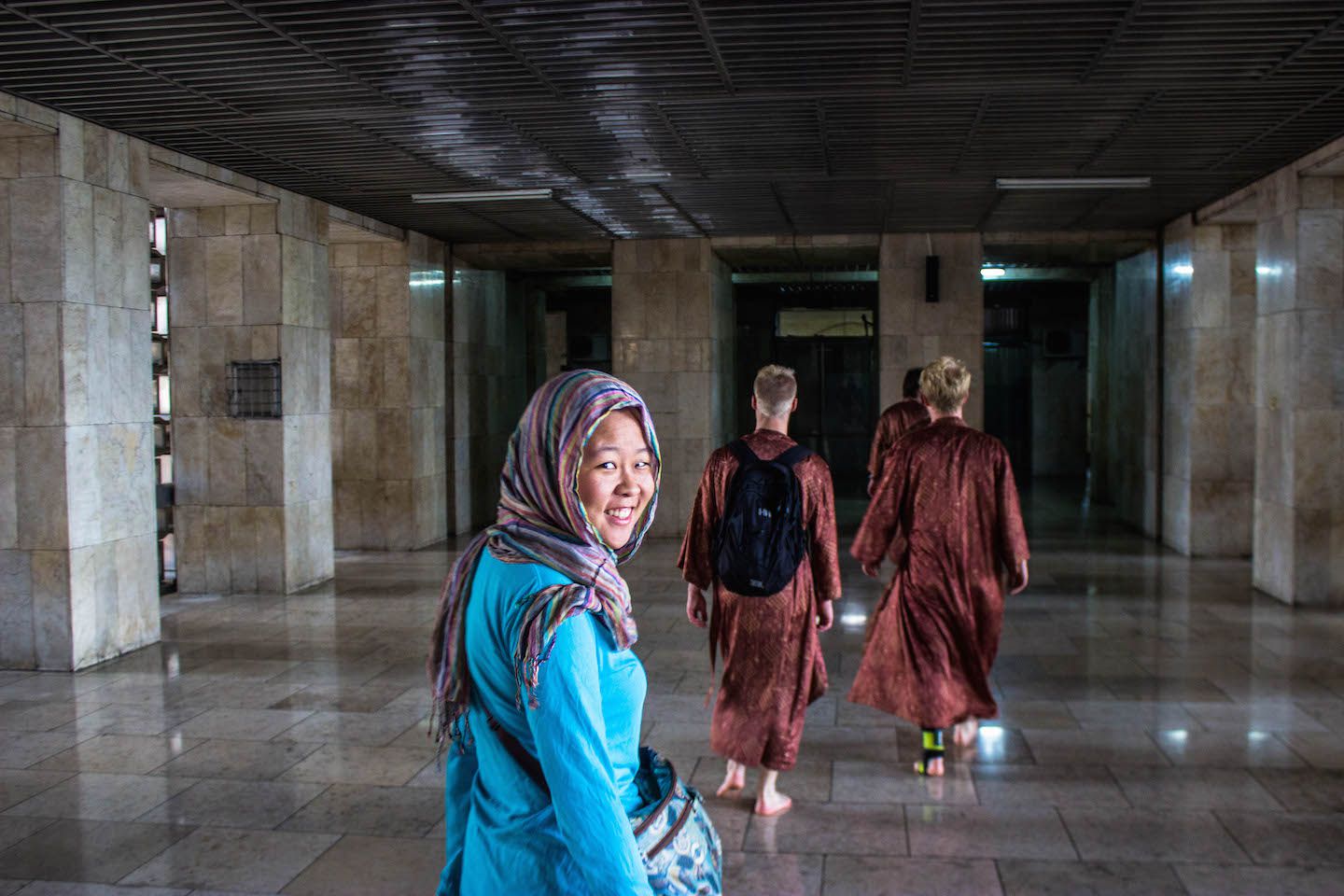
The one time we did venture outside our little chosen area in Central Jakarta was not even that far away – to the Hotel Indonesia roundabout. We figured there was no better place to get a feel of the city life than here. In the middle of the main avenue in the heart of Jakarta, the Selamat Datang Monument (“welcome” in Indonesian) stands in the middle of a fountain, surrounded by endless skyscrapers, huge malls, and the fanciest 5-star hotels in Jakarta. With this view and the soundtrack of construction, traffic, and people, I think our mission was accomplished. We took advantage of the free Jakarta City Tour bus that essentially circles all the landmarks we’ve mentioned.

Being the city girl that I am, I didn’t hate Jakarta the way a lot of visitors do. Maybe it was the ever-present excitement of a new country with new little things to discover. Maybe it was the fun of being mistaken for Indonesian by locals. Regardless, Jakarta presented a telling side of Indonesia that was noteworthy – the developed side of that developed vs. wilderness dichotomy, the realities of modernity with an overwhelming populace. “Big Durian,” indeed. At least I can say that I like Jakarta more than I like durians.
For more pictures from Jakarta, please visit the gallery!

